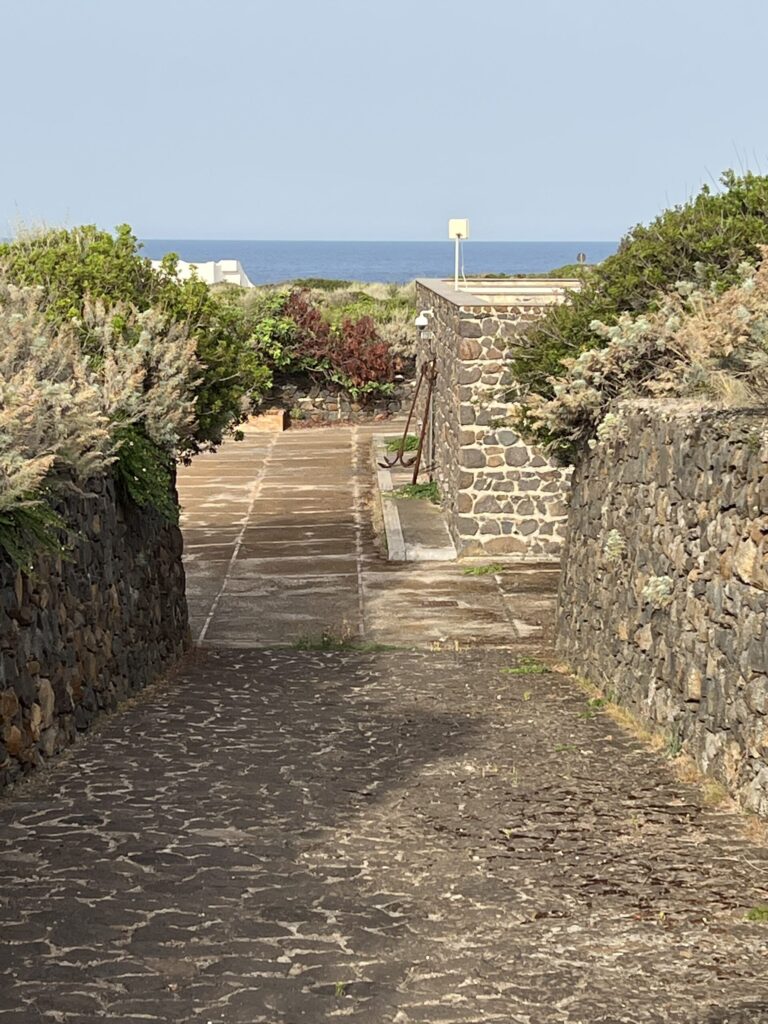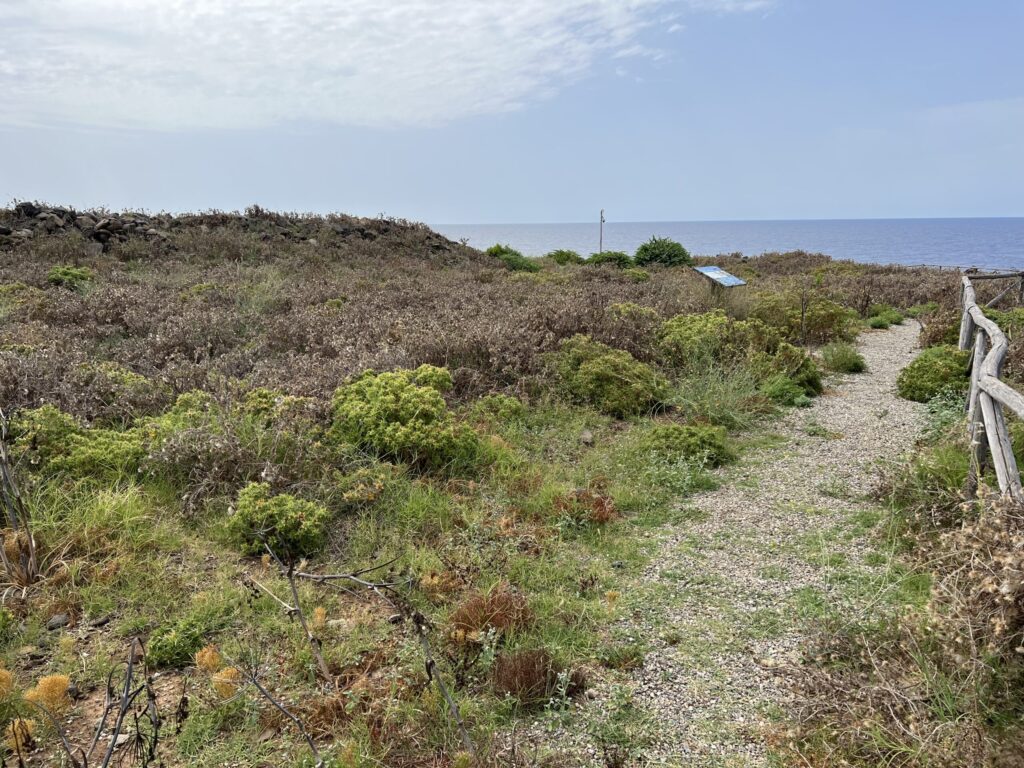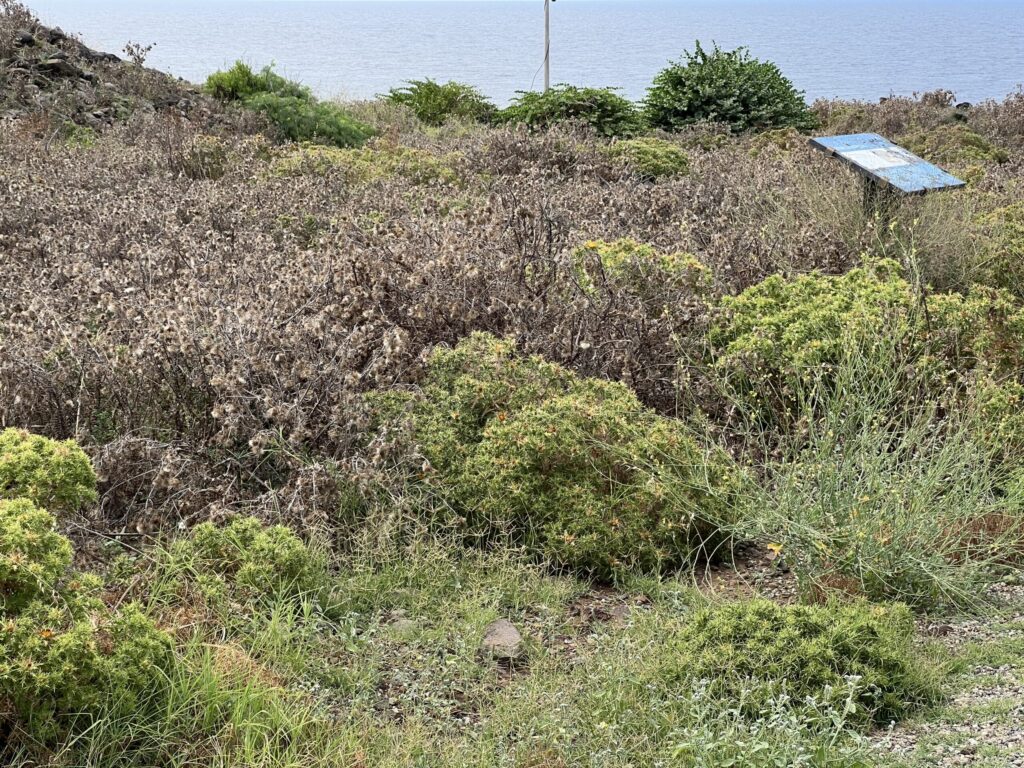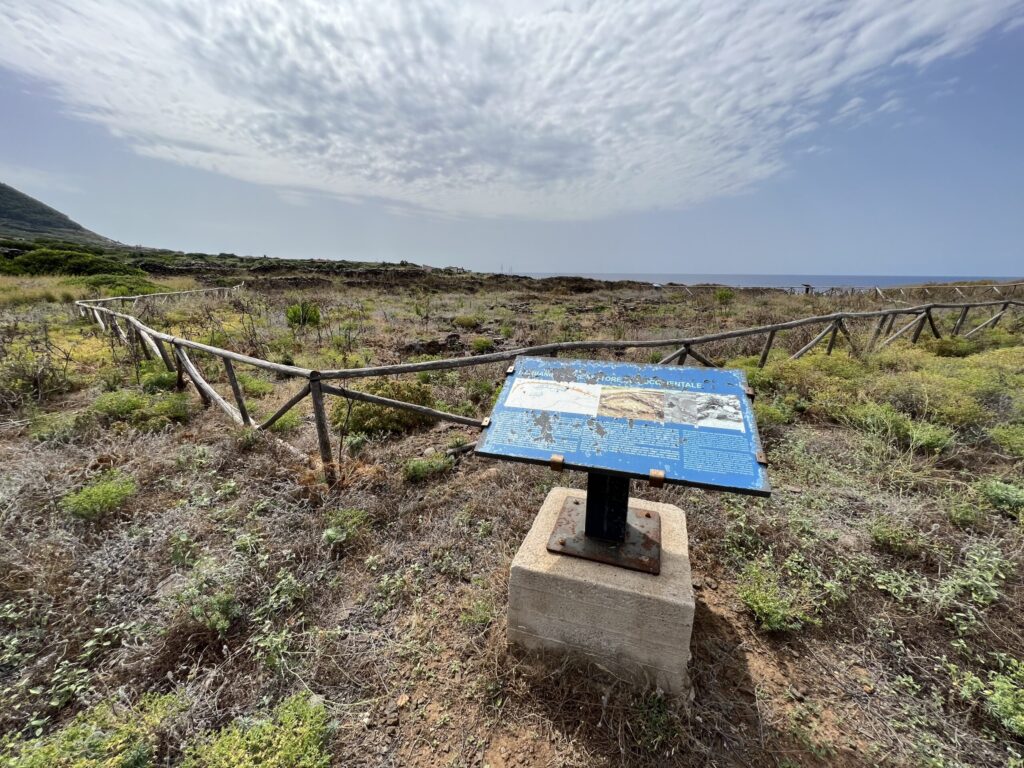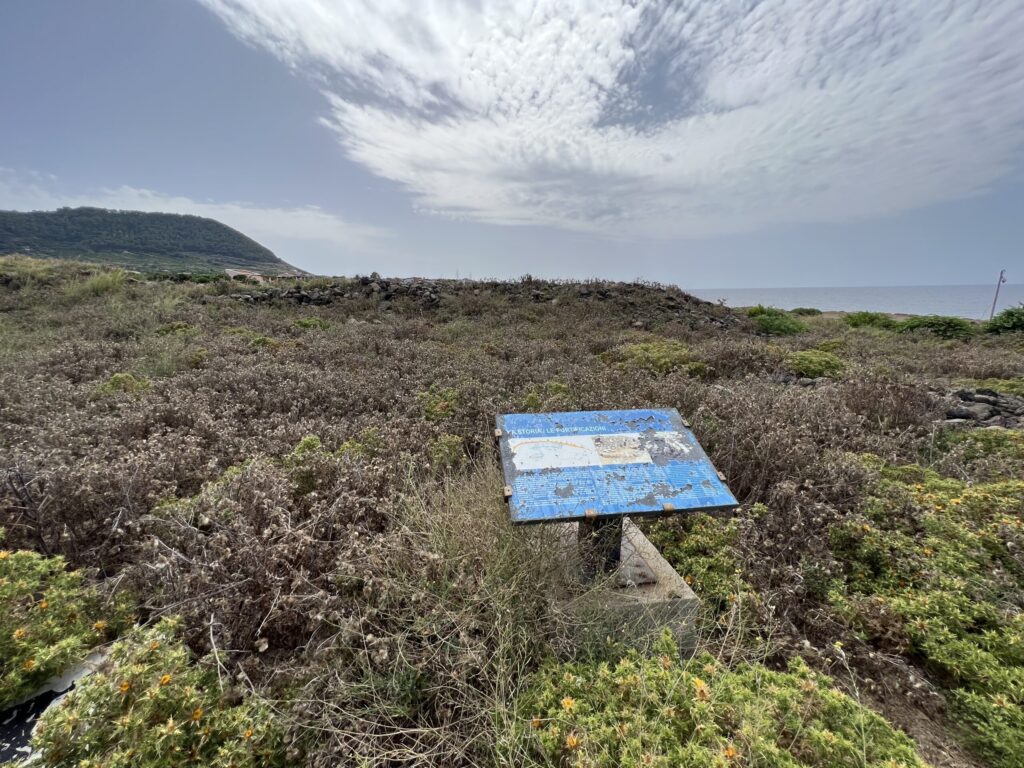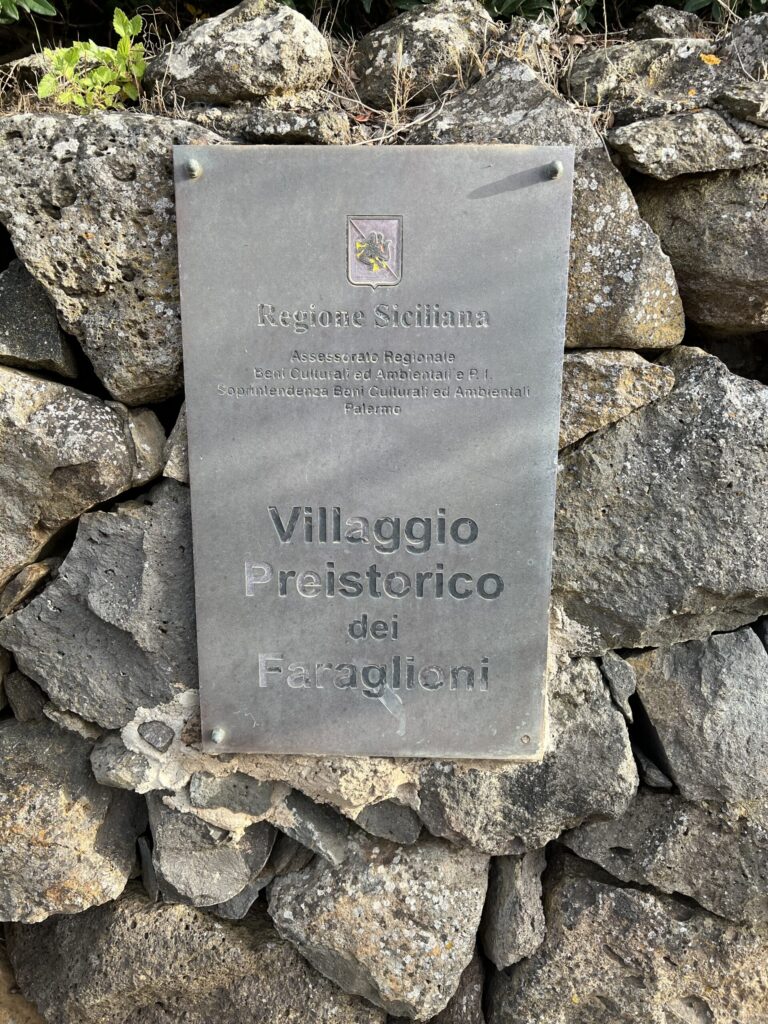The Prehistoric Village
Fortified village of the Faraglioni from the Middle Bronze Age, one of the most important island settlements of the Middle Bronze Age
Description
The fortified Bronze Age village of Faraglioni, discovered in 1970 by Giovanni Mannino, is located on the northern edge of the Tramontana coast, facing the Colombaia sea stack. It covers an area of approximately 7,000 square meters, though it is believed to have been even larger, as traces of huts were also found on the sea stack itself. The sudden abandonment of the village by its inhabitants was likely caused by the collapse of part of the coastline, which explains the wealth of artifacts uncovered and makes it one of the most significant Middle Bronze Age monuments in the Mediterranean. Access to the village from the sea was blocked by the high cliffs on the inland side, while it was protected by a tall defensive wall.
The excavations, conducted between 1974 and 2008, revealed numerous huts, both circular and square, some featuring open courtyards and storage areas, arranged along a well-planned road system. The artifacts recovered during the digs are displayed in two pavilions of the “P. Carmelo Seminara da Ganci” Municipal Archaeological Museum, where the most significant finds from the excavations are showcased.
Access procedure
Access to the Prehistoric Village and museum is currently not permitted, as the facility is temporarily closed to the public.
However, the surrounding area remains open and can be viewed from the outside.
Information
Address
Tramontana Coast, Ustica, PA, Italy
Hours of operation
The facility is temporarily closed to the public
Who is it intended for?
Position
Explore the point of interest
Immergiti in un'esperienza virtuale coinvolgente e scopri ogni dettaglio
Interactive 3D Models
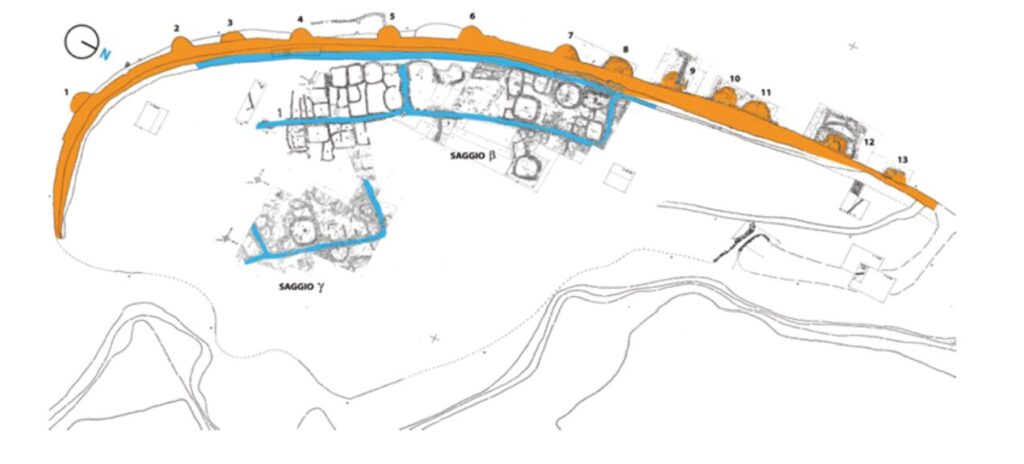
Ustica's Faraglioni Village
Immerse yourself in Ustica's past with this 3D model of the Middle Bronze Age Prehistoric Village. Explore the ancient circular dwellings, defensive walls, and discover how the island's inhabitants lived over 3,500 years ago. A virtual journey through the settlement that showcases the rich archaeological history of this Mediterranean corner.
Map of points of interest
Explore all points of interest on an interactive map and plan your sightseeing route

